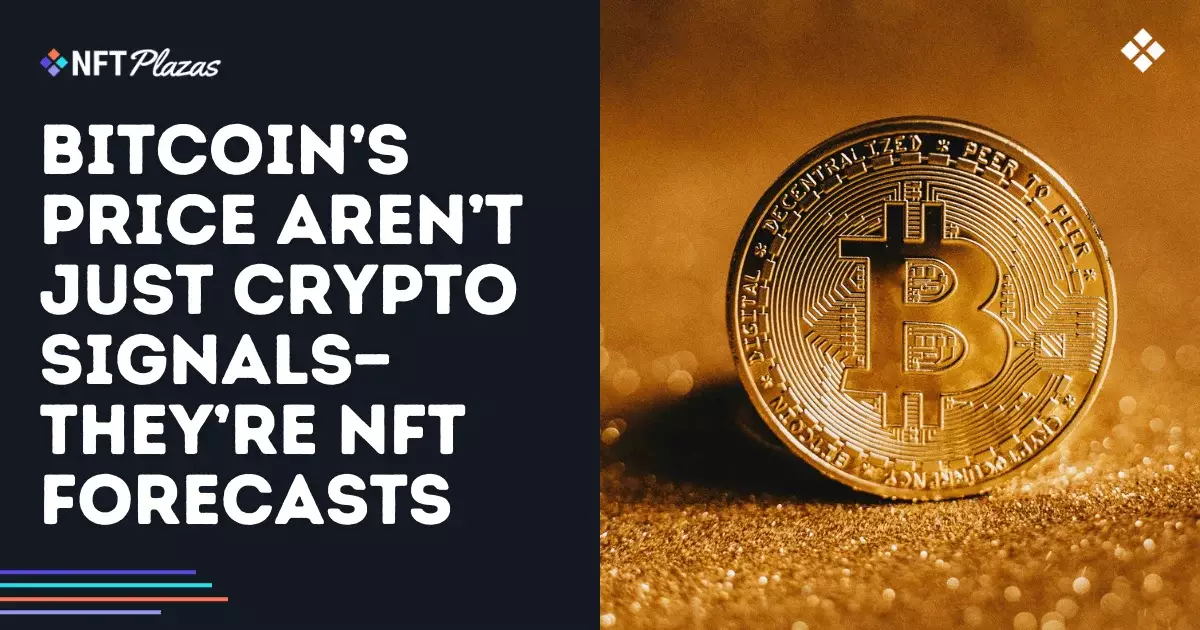In the ever-evolving landscape of digital assets, Bitcoin stands as an undeniable powerhouse, intricately dictating the flow of the NFT market. The correlation is palpable; while collectors and artists chase the ephemeral art that NFTs represent, it’s Bitcoin’s fluctuating valuation that seems to act as the spine of the entire industry. When Bitcoin gains momentum, NFTs bask in that glow, but a downturn has the power to wreak havoc on what many thought were independent entities. This relationship doesn’t merely hint at the health of the NFT marketplace; it’s almost predictive, underscoring a disconcerting reliance on a single currency that waxes and wanes based on a myriad of external influences.
Riding the Bull, Facing the Bear
Historically, Bitcoin’s dramatic ascents—and equally steep descents—have played central roles in shaping NFT valuation trends. Take, for instance, the explosive growth witnessed in early 2021. Bitcoin surpassed the monumental $40,000 threshold, heralding a wave of curiosity and investment that propelled NFTs into the limelight. However, that surge was mirrored in the irrational exuberance that followed with NFT sales reaching breathtaking heights. Who could forget Beeple’s astounding $69 million sale? But in a market so tethered to the whims of Bitcoin, the subsequent plummet below $20,000 in mid-2022 served as a sobering reminder that euphoria can evaporate as quickly as it arrives, dragging NFT volumes along with it.
The Emotional Rollercoaster for NFT Enthusiasts
For those involved in the NFT sphere, understanding market sentiment becomes pivotal. Tools like the Fear and Greed Index provide insight into the crowd’s psychology, but anxiety looms large when investors suddenly pivot based on Bitcoin’s trends. Fear can prompt devastating sell-offs, creating a ripple effect across platforms and wallets. The emotional volatility inherent in NFTs often reflects an urgent need for stability—one that Bitcoin curiously fails to provide consistently. It often makes one wonder: are NFTs truly autonomous assets, or just shadows cast by Bitcoin’s unpredictable pulse?
Shifting Focus to Sustainable Models
The luminaries within the NFT space must grapple with their reliance on Bitcoin’s capricious nature. As projects emerge that revolve around web3 gaming or augmented reality, there’s a palpable shift towards realigning strategies that take macro trends into account, rather than reacting to them post-factum. The challenge lies in fostering a more resilient ecosystem that doesn’t solely depend on Bitcoin but explores innovative approaches to secure project viability and originality. Indeed, the smart investors are not merely eyeing NFT floors but instead examining broader crypto trends, searching for signals that indicate a healthier, less volatile market landscape.
Beyond the Charts: The Need for Independence
As the dust settles on the tumultuous relationship between Bitcoin and the NFT marketplace, we must question whether this dependency is healthy for the future. Is it wise for NFT artistry and innovation to be shackled to a single currency? The narrative should evolve beyond Bitcoin’s influence, encouraging resilience within the NFT communities. Yes, blockchain technology remains revolutionary, but adapting to market complexities without leaning on Bitcoin could become the key for future sustainability and growth. A movement toward a more decentralized and versatile framework might just pave the way for a more vibrant and independent digital art ecosystem.


Leave a Reply